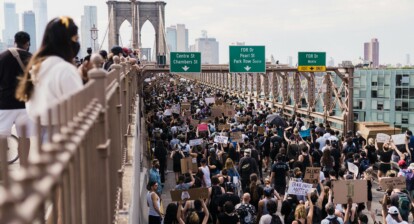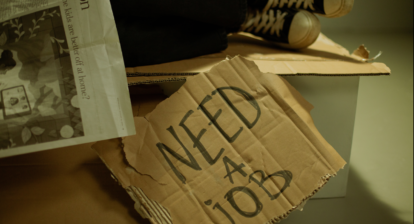A new epoch in the Israeli-Palestine conflict has begun, as the world has been shocked by erupting violence between Israel and Hamas. On the 7th of October, hundreds of Israelis were kidnapped, tortured and killed during a large-scale and well-planned attack by Hamas. As a reaction, Israeli forces have started bombing targets in Gaza, aiming to eliminate Hamas ‘terrorists’, with many civilian casualties as result. As of now, a ceasefire is being discussed after weeks of heavy fighting in Gaza, with many casualties as a result.
There has been a vast amount of political response on the conflict from Western countries. The U.S, along with allies France, Germany and Italy declared full support of the Israelian cause: “(…) We express our steadfast and united support for the State of Israel” [1]. Dutch PM Rutte stated Israel has full right to ‘defend itself against terrorist attacks’ [2]. Still, the political response of these Western countries does not depict the plurality of opinions their civilians have about the conflict. In many cities around the western world, collective action has been undertaken in the form of marches and demonstrations.
In The Hague, a Kurdish-Dutch protester stated that she feels abandoned by the Dutch government: “we migrated here with the idea that the Netherlands cared about human rights” [3]. In Berlin, pro-Palestine protesters hold signs saying ‘stop the genocide!’. Opposing sentiments on who is the ‘wrongdoer’ have caused tumult among US college students, where opposing opinions have caused collision among the students [4]. It seems as if opposing opinions come more and more to the foreground.

It is crucial to evaluate how such opposing sentiments exist in these Western countries. What might spark these different opinions, in comparison with previous decades with more consensus on the matter? One important factor that can be pointed at, is the increasing impact of social media in the political discourse [5]. Since the development of social media platforms such as X, Instagram and TikTok, debates and collective actions have increasingly spread into the online sphere in something called ‘digital activism’.
This sort of activism takes form in various ways. Among these are the myriad of messages and videos about the wrongdoing of the war are posted, opinions that are shared on Instagram stories and conversations that have turned into debates on X. Palestinian activists have increasingly used these digital tools to rally for their cause in past years [6]. Moreover, demonstrations can be organized more quickly than ever; large protests sparked within a few hours all over the world when it was assumed Israel had bombed a hospital in Gaza [7]. Even famous football players have shared messages revealing their support for the Palestine cause, although this has led to a certain awkwardness within their Western clubs [8] . This diffusion of conflict-related information therefore occurs at an unprecedented rate. These online social movements are likely to change people’s perceptions on the Israeli-Palestine matter. Subsequently, these might effectively change the course of the world, as government support for Israel or neglecting the Palestine cause by Western countries might not be accepted any longer.
But there are challenges with these platforms and the role they play in shaping people’s opinions and subsequent social action, as pointed out by Lindgren [9]. Instagram creates so-called ‘filter bubbles’: you receive content based on what the algorithm thinks you find interesting or that you are likely to agree with. Instagram is even accused of ‘shadow-banning’: deliberately moderating content in such a way that only one side of the story is told [10]. The production of fake news and the making of deep fake videos can have a large impact on people’s opinions, but they show things that are just not real. Another thing that is important here is ‘anchor-bias’, meaning that the first message you receive on a subject usually determines your stance. Creating an opinion on this conflict is shaped increasingly by social media platforms. But if these show one-sided stories on the matter, that might be very problematic for cohesion within societies.
The debate on the Israelian-Palestinian war is very much alive, which is a crucial and important facet of a well-functioning society. Digital activism is an opportunity to raise voices, on both sides. Opposing sentiments on the conflict that grow here not necessarily a bad thing. Still, we should be careful about the role that social media platforms have in shaping opinions. Social media invites for a quick side-picking, that can in turn be devise for society as a whole. This might enhance an already increasing polarization between people and countries. A first step towards a solution is spreading awareness of the rather uneasy role social media is playing in opposing sentiments. I can only hope this post adds to this awareness.
Referenties
[1] The White House (2023, October 9th). Joint statement on Israel. In: statement and releases. https://www.whitehouse.gov/briefing-room/statements-releases/2023/10/09/joint-statement-on-israel/
[2] Nederlandse Omroepen Stichting (2023, October 7th). Premier Rutte: Nederland staat achter Israel. Video. https://nos.nl/collectie/13959/video/2493198-premier-rutte-nederland-staat-achter-israel
[3] Katawazi, G. (2023, October 19th). ‘Het voelt alsof de doden aan Palestijnse kant minder uitmaken’. Trouw, Vandaag (4-5). https://www.trouw.nl/buitenland/het-voelt-alsof-de-doden-aan-de-palestijnse-kant-minder-uitmaken~b6acdff8/
[4] Epstein, K. (2023, October 17th). Israel and Gaza on campus: Tumult as US colleges as two sides dig in. BBC news, New York. https://www.bbc.com/news/world-us-canada-67114291
[5] Getachew, A. & Beshah, T. (2019) The Role of Social Media in Citizen’s Political Participation. In IFIP Advances in Information and Communication Technology vol. 558 487–496. https://doi.org/10.1007/978-3-030-20671-0_33
[6] Civicus Staff (2022, June 16th). Palestinian activism gone digital. Civicus Lens: perspectives for a changing world. https://thecyberexpress.com/israel-palestine-conflict-cyber-warfare-risk/
[7] Jones, S. (2023, October 18th). Angry protests flare up across Middle East after Gaza hospital blast. The Guardian, Israel-Hamas war. https://www.theguardian.com/world/2023/oct/18/gaza-hospital-al-ahli-al-arabi-blast-explosion-protests-demonstrations-middle-east
[8] Nederlandse Omroepen Stichting (2023, October 18th). Franse club Nice zet speler op non-actief wegens ‘verheerlijken geweld Hamas’. Oorlog Hamas-Israel. https://nos.nl/collectie/13959/artikel/2494538-franse-club-nice-zet-speler-op-non-actief-wegens-verheerlijken-geweld-hamas
[9] Lindgren, S. (2019). Movement mobilization in the age of hashtag activism: Examining the challenge of noise, hate, and disengagement in the# MeToo campaign. Policy & Internet, 11(4), 418-438. https://doi.org/10.1002/poi3.212
[10] Savolainen, L. (2022). The shadow banning controversy: perceived governance and algorithmic folklore. Media, Culture & Society, 44(6), 1091-1109. https://doi.org/10.1177/01634437221077174







